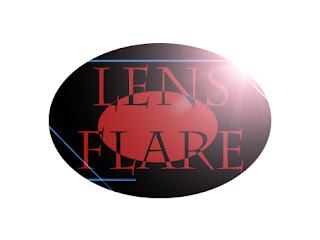
Used first to emulate photographic apparatus, the lens flare filter, one of the first added to Photoshop, implied a fictional act of photography even in non-representational images. In a matter of months, it became a hallmark of digital graphics. Far from suggesting the presence of a 'real' camera, the repurposed lens flare plug-in emphasised digitality, and simultaneously produced illusions of depth in 2D images. The latter accidental discovery reorganises a temporal signature ('a camera was present') as a spatial one. Such migrations are the bread and butter of the microhistory of media.

1 comment:
You might like to consider focal perception in this respect also. An example: my new pocket camera has what is called a 'miniature' effect - basically an emulation of the shift-tilt lens on analog cameras. In technical terms, all it does is blur the top and the bottom of the image, giving you a narrow strip of focus. With a suitable subject (a city street taken from a high window of a building, say) the resulting image looks like a photograph of a miniature landscape: the same kind of thing you get when taking a picture of a train set: the foreground out of focus, the train in focus, and the background out of focus (this is of course due to the fact that in the lowish indoor lighting conditions of a model landscape, a close focal plane tends to be very narrow).
The thing is, the 'miniature' effect is completely one of convention. It's just a an illusion introduced into our brains by familiarity with these kinds of images through our exposure to flat plane photography. It's not anything you ever experience in 'reality'. What surprises me is how indelible the effect is - you can show these trick tilt-shift images to pretty much anyone and they understand it immediately to be a miniature. Even when you know what's going on, it's hard to see it as anything else.
There are thousands of them on the web:
http://bit.ly/pmlVqu
It's an effect that can also be simply done in Photoshop, just by putting the top and the bottom of a suitable image out of focus.
Post a Comment